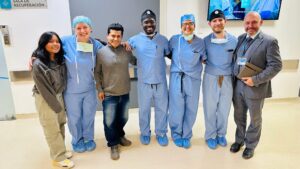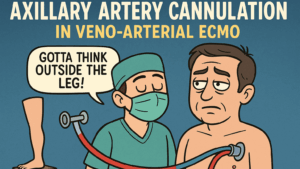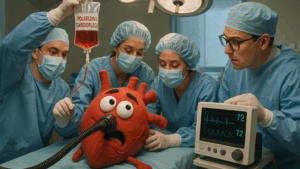Introduction
Cardiac surgery is crucial for advanced cardiovascular disease management, yet postoperative ICU stays and in-hospital mortality remain critical concerns. This study aims to identify perioperative predictors of adverse outcomes in cardiac surgery to help refine surgical strategies and improve patient survival.
Methods
Researchers retrospectively reviewed 130 patients undergoing cardiopulmonary bypass-assisted cardiac surgery between October 2022 and November 2024 at the Emergency Clinical County Hospital of Craiova, Romania. Key data included preoperative risk factors, intraoperative times (cardiopulmonary bypass time – CPBT and aortic cross-clamp time – AXCT), and postoperative outcomes.
Results
Prolonged ICU stays (≥7 days) were found in 38.5% of patients, while in-hospital mortality was reported at 10%. The median patient age was 61 years, with 66.2% being men. Most surgeries were for valvular heart disease and coronary artery bypass grafting.
ICU Stay Predictors
Univariate analysis identified longer CPBT, extended AXCT, smoking, chronic obstructive pulmonary disease (COPD), and postoperative blood markers (e.g., thrombocytes, neutrophils) as associated with prolonged ICU stays. However, multivariate logistic regression found AXCT as the sole independent predictor, with an optimal threshold of 110 minutes (71% sensitivity, 61% specificity, AUC 0.729). Patients with AXCT >110 minutes had significantly prolonged ICU stays.
Mortality Predictors
In-hospital mortality was independently predicted by prolonged CPBT, emergency surgery, and increased AXCT. ROC analysis revealed a 140-minute AXCT threshold and a 227-minute CPBT threshold for predicting mortality, with excellent model discrimination (AUC 0.846). Emergency surgeries also significantly increased mortality risk.
Discussion
This study reinforces that intraoperative times critically influence postoperative outcomes. Particularly, AXCT serves as a practical, intraoperatively monitorable benchmark. CPBT, although also influential, was secondary to AXCT in predicting ICU stay but was highly significant for mortality outcomes.
Unlike earlier studies that emphasized preoperative risk scores like EuroSCORE or STS scores, this work highlights actionable intraoperative metrics, enabling real-time risk adjustment during surgery. The findings emphasize the importance of myocardial ischemia time as a determinant of patient recovery.
Notably, age and some comorbidities like hypertension and diabetes did not emerge as independent predictors, challenging common assumptions and highlighting the dominant role of intraoperative technical factors over baseline demographics.
Clinical Implications
Surgeons and intensivists can use these thresholds to optimize cardiac surgery practices, manage ICU resources better, and possibly improve survival rates. Particularly, limiting AXCT to less than 110 minutes could mitigate ICU resource strain, while managing CPBT and avoiding emergency surgical delays can enhance survival outcomes.
The combined predictor model offers an easy-to-apply framework for intraoperative and ICU team decision-making, potentially improving patient throughput and reducing mortality in cardiac surgery settings.
Limitations
The study’s retrospective single-center design and modest sample size limit generalizability. Variability in institutional practices and surgical techniques could influence operative times. Additionally, the study didn’t separately stratify emergency versus elective surgeries in predictive models.
Despite these limitations, the study provides a valuable contribution to perioperative cardiac surgery management, offering clear intraoperative thresholds that can be readily implemented.
Conclusion
Monitoring AXCT and CPBT closely during surgery provides actionable insights into predicting prolonged ICU stays and in-hospital mortality. Adopting these benchmarks could lead to better resource utilization, reduced costs, and improved patient outcomes following cardiac surgery.







